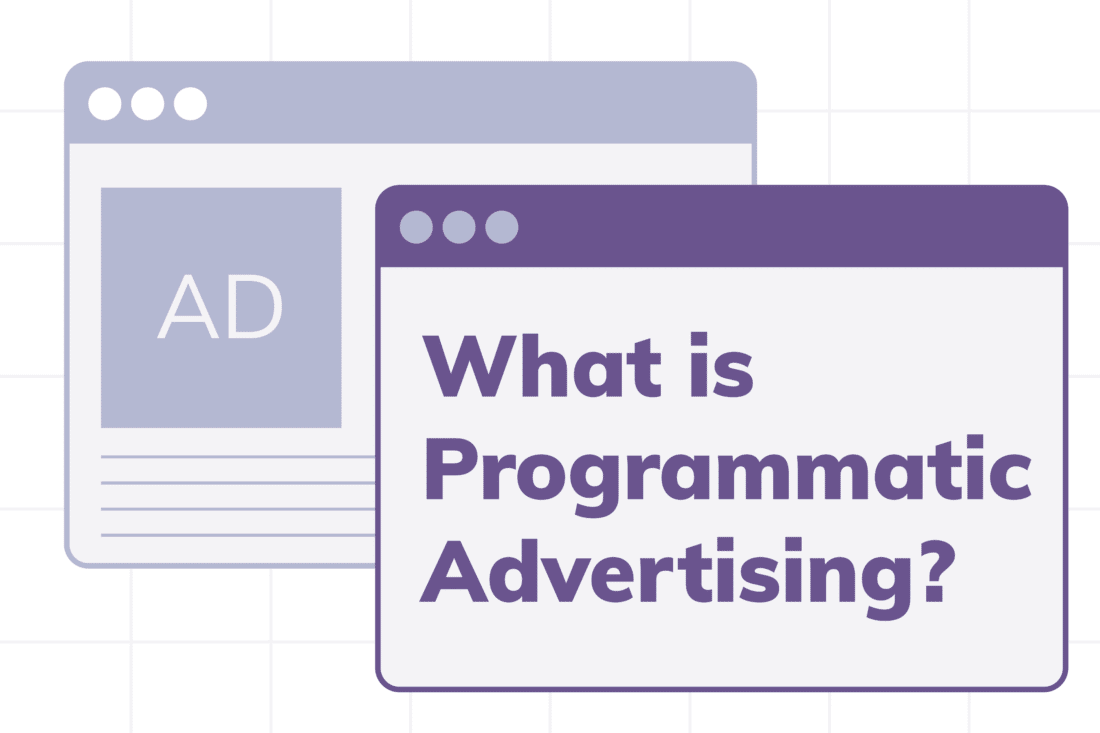
What is Programmatic Advertising?
Programmatic Advertising for Nonprofits: Understanding Programmatic Advertising
Programmatic advertising helps nonprofits target specific audiences across the internet. Programmatic ads use analytics and machine learning to find the people who fit into your target audience as they browse a variety of content online (e.g., If you work in the health space, you can reach people browsing content about relevant conditions. Or if you are fundraising, you can reach people who are researching relevant issues).
In the early days of online advertising, it was common to reach out to websites individually to place ads. Programmatic advertising streamlines this process. Rather than selecting individual websites, you can define who you want to reach and let the programmatic algorithms do the rest.
Note on vernacular: Programmatic advertising is different from how nonprofits typically refer to “programmatic” content. It does not refer to your organization’s programs but rather the algorithmic nature of the advertising tools.
How does Programmatic Advertising Work?
How to Use Programmatic Advertising
Programmatic advertising is purchased through a variety of Demand Side Platforms (DSPs) that connect advertisers with website inventory within a matter of milliseconds. While some large advertisers have self-serve access to DSPs, most advertisers access DSP inventory through 3rd party vendors. The first step to getting started with programmatic is making a list of potential partners, then reaching out to them to request a proposal. There are thousands of programmatic vendors out there—some have broad targeting and inventory options, while others have niches in specific audiences or inventory types.
Audience targeting via programmatic includes tactics such as:
- Keyword contextual targeting: targeting based on the content people are reading, e.g., people reading content about climate change
- Search targeting: targeting based on what people have searched for, e.g., people who have searched for volunteer opportunities
- Behavioral targeting: targeting based on people’s behaviors and interests, e.g., people who frequently give to charities
- Demographic targeting: Targeting by age, gender, or household income
- Geotargeting: Location-based targeting
- Retargeting: Targeting people who have previously visited your website or interacted with your ads
- And more!
Most ad solutions can be purchased programmatically, including video, audio, native ads, display banners, and even digital billboards. While Paid Social ads (Facebook, LinkedIn, etc.) can be purchased programmatically, “programmatic advertising” typically refers to non-social network ads.
Why Use Programmatic Advertising
- Programmatic advertising helps eliminate wasted spend by narrowing the focus to very specific audiences rather than targeting entire websites or sections of websites.
- Programmatic advertising increases reach by spreading budget across a variety of sites rather than forcing you to spend all your budget in one place.
- Programmatic advertising uses machine learning to maximize results, helping you get in front of the right people at the right time with the right message.
- Programmatic advertising is often a more cost efficient way to buy media placements. Contracting with media partners directly often requires hefty spend minimums, whereas a programmatic buy allows you to have an ad presence across a number of sites or channels at a relatively low CPM.
- The websites where your ads show are vetted for legitimacy and brand safety. Programmatic vendors often work with tools to eliminate ad fraud as well. If your organization is especially sensitive to certain types of websites, you can also add blacklists to avoid showing on certain sites or topics.
- The creative solutions can be endless! While there can be opportunity to repurpose social ads via programmatic, you can also run standard display, rich media, native ads, video, audio—the list goes on. In addition to custom content, programmatic can be a solution for most types of advertising and, therefore, can help achieve a number of KPIs, from awareness to lead generation to sales or fundraising.
When to Explore Programmatic Advertising
Programmatic advertising can be used on its own or as a compliment to Paid Social and Paid Search strategies. Programmatic advertising is particularly useful for:
- Full-funnel campaigns (awareness → action)
- Sophisticated audience targeting
- Expanding your reach beyond search + social
- Serving contextually relevant ads
- Promoting a variety of creative
- Scaling up your campaigns
A Couple of Things to Keep in Mind
View-through Conversions
In general, most conversions from programmatic advertising are “view-through,” meaning people find your website and take action on their own after viewing an ad (for example organically or via a paid search ad), rather than taking action immediately after clicking the ad. This means that many conversions may not be attributed to programmatic advertising in last-click tools like Google Analytics, even if the vendor is actually delivering strong results. Programmatic vendors will place pixels on your site and use those to provide reporting that shows how many view-through conversions are generated after a user views an ad impression.
Budget
While typically more cost effective than partnering with a site directly, contracting with a programmatic vendor still tends to require a minimum spend of at least $5K per month. Depending on the geo footprint of your media campaign, we often recommend an investment of at least $10K in order to drive results.
Conclusion
Programmatic advertising can be a great way to extend your organization’s reach and achieve your goals. Media Cause experts are ready to help you kick off your first programmatic campaign. Learn more about our advertising services here.